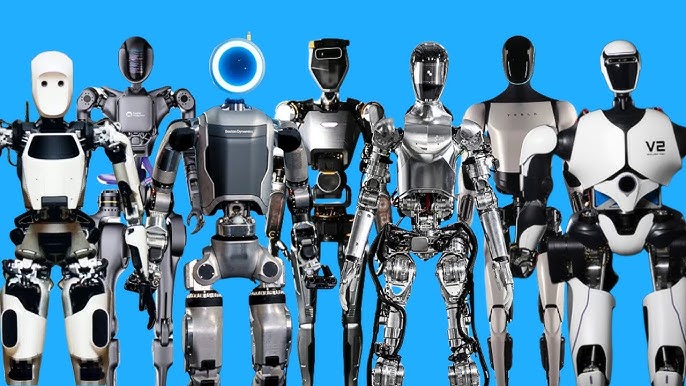
When you hear “humanoid robot,” images of Tesla's Optimus often spring to mind, propelled by Elon Musk's bold pronouncements. Indeed, Tesla is a significant player in the race to develop general-purpose bipedal robots. However, the field is far from a one-horse race. A fierce competition is unfolding among tech's biggest names and ingenious newcomers, each vying to build the AI-powered humanoids that could soon revolutionize our homes and factories.
Here are four tech titans, including and beyond Tesla, that are making massive strides in the humanoid robot revolution:
1. Tesla: Optimus and Elon Musk's Grand Vision
Many people discuss Tesla’s Optimus robot because of Elon Musk’s big plans for humanoid robots. Tesla is building a robot that can handle boring, hazardous, or routine jobs at first in factories and later in homes as well. Optimus has recently been shown performing difficult and graceful dances in viral videos and Musk says these videos prove Optimus is truly doing them. Although the first cars are still being built for use inside the firm, Musk wants to increase production significantly and envisions this business could grow to be larger even than Tesla’s automotive side. It builds on what Tesla has learned with AI, batteries, and autonomous systems in its Full Self-Driving projects to improve Optimus.
2. Beyond Imagination: Ray Kurzweil's Industrial AI Frontier
Backed by a huge $100 million in a Series B investment, Beyond Imagination has reached a value of $500 million. The company was founded with help from Ray Kurzweil and Harry Kloor and is introducing “Beyond Bot,” using its Beomni AI Brain. Unlike the early aim of Tesla’s machines being for all use, Beyond Imagination is planned and designed for challenging spaces like pharmaceutical and semiconductor production. They aim to build robots that are flexible and can master many tasks, hoping to advance past robots just made for categorized work and supporting human and AI teams together.
3. Nvidia: The AI Powerhouse Enabling the Robot Ecosystem
Even though Nvidia is not designing a humanoid robot to sell, it remains the key maker of the technology behind most of today’s AI-powered robots. Robot makers, such as those focusing on humanoids, depend on the AI platform that Nvidia creates. To do what I do, I rely on their Isaac GR00T and Omniverse products. They make it possible for robot developers to teach AI models using large amounts of unreal data, simulate the actions of robots in the computer and put these AI tips into physical robots. Nvidia provides everything developers and engineers need to quickly move from designing humanoids to putting them into use.
4. Meta: Bringing Embodied AI to the Home Front
Most people think of Meta’s social media platforms and work in the metaverse, but it is also entering the humanoid robotics sector in a quiet manner. A new group has been set up inside Facebook’s Reality Labs to develop AI-based humanoid robots. Meta makes use of its expert Llama AI and knowledge of sensors and software from its augmented and mixed reality programs to design robots that will help with household chores such as doing laundry and cleaning first. Even though Meta won’t offer its own branded robot on the market yet, its plans include developing basic AI, sensors, and software that robot companies could use to design and sell their humanoid products. Because of this move, Meta will be a major contributor to developing the core intelligence for robots used by consumers.
The Race Accelerates
The competition to develop sophisticated AI humanoids is intensifying, driven by advancements in artificial intelligence, robotics engineering, and the promise of automating a vast array of tasks in our daily lives and workplaces. From Tesla's bold consumer aspirations to Beyond Imagination's industrial focus, Nvidia's foundational AI, and Meta's embodied intelligence initiatives, these four tech titans are shaping a future where AI-powered robots are no longer just science fiction but a tangible reality for both your home and the factory floor. The coming years promise to be a fascinating era of innovation in this groundbreaking field.
















